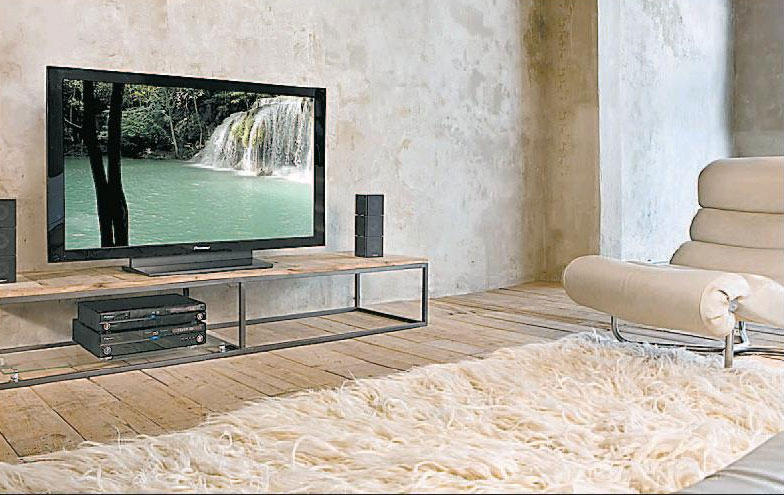Prices are coming down and now may be the time for a new HDTV
Marc Saltzman
Province

If you can spare $6,000, the 50-inch Pionee Kuro PRO-110FD HDTV offers 1080p resolution and ‘deep, intense blacks for unmatchen contrast,’ according to the manufacturer.
Thanks to falling prices and dozens of eye-popping channels to choose from, the time is right for purchasing a high-definition television.
Rather than displaying images at 480 lines of resolution, an HDTV is capable of showing up to 1,080 lines, and in many cases “progressively,” meaning all lines are displayed on the screen at the same time in contrast to the older “interlaced” method of quickly alternating between even and odd lines.
Another, more accurate way HDTVs are measured is in the number of pixels (little dots) that make up the image. A widescreen DVD, for example, is displayed at 852 x 480 resolution but a high-definition television can offer up to an incredible 1920 x 1080 pixels on the screen.
Because the picture quality is much clearer and more vibrant than a standard-definition television, upgrading to an HDTV is like putting on a pair of prescription glasses for the first time. High-definition televisions are also wider (called 16:9 aspect ratio), which is more akin to a movie theatre screen than standard-definition TVs, which are more square (4:3 aspect ratio).
“Watching basketball on my HDTV is fantastic — it’s like being right at the game,” says Rashay Jethalal, 31, a management consultant from Toronto. “I also love shows in HD like CSI and 24, which look simply amazing.”
After two months of research, Jethalal decided on a 42-inch Pioneer Elite plasma television. “When comparing TVs, I found that the colour and the contrast were better on a plasma than an LCD screen, plus I wanted something to mount on my wall, so that ruled out rear-projection.”
Jethalal also says he likes the model’s built-in ethernet jack and USB port so he can link to favourite media files — music, photos and videos — stored on his computer or on an external hard drive.
But for many, settling on the right technology remains a struggle. If you’re sold on buying an HDTV but uncertain about whether to choose plasma, flat-panel LCD or rear-projection, here’s a quick guide summarizing the strengths of each.
Plasma
Many home theatre enthusiast believe plasma TVs offer the most accurate colour reproduction and saturation compared to other technologies, as well as better contrast (black on some LCD televisions might look more grey). Plasma TVs also handle motion very smoothly, so it’s often a pick for sports enthusiasts and video gamers.
Plasma TV sizes start at 42 inches, so if you’re looking to go smaller, you’ll be limiting yourself to LCD. One problem with plasma is with its reflective glass which can bounce light back, say, from a nearby window. They are better suited to rooms with less ambient light.
LCD
Liquid crystal display-based flat-panel televisions are thinner, lighter and more energy-efficient than most competing TV technologies (about 30 per cent more energy efficient than plasmas). They come in a wide range of sizes, from 13 inches all the way up to 108 inches and their anti-glare screens make LCD TVs better suited to a bright room than plasma TVs. Like plasma TVs, LCD televisions offer wide viewing angles (up to 178 degrees) — you don’t need to sit in the centre to enjoy the picture — and offer long lifespans of about 60,000 hours.
The latest LCD TVs offer low refresh rates, which means they can handle motion more effectively now than they did a couple of years ago.
Contrast isn’t as good as on plasma, but many LCD televisions are getting better at displaying deep black. Prices are now comparable to plasma.
Rear-projection TVs
If you’d like a big, gorgeous HDTV picture but don’t want to spend a lot of money for a flat-screen model, rear-projection high-definition televisions offer a lot of bang for the buck. A 60-inch rear-projection TV might be half or even a third of the price of a comparable plasma TV.
Keep in mind that rear-projection TVs are only ideal in big sizes (50 inches and up) and some rear-projection televisions may take about 30 to 45 seconds to “warm up”.
© The Vancouver Province 2007

